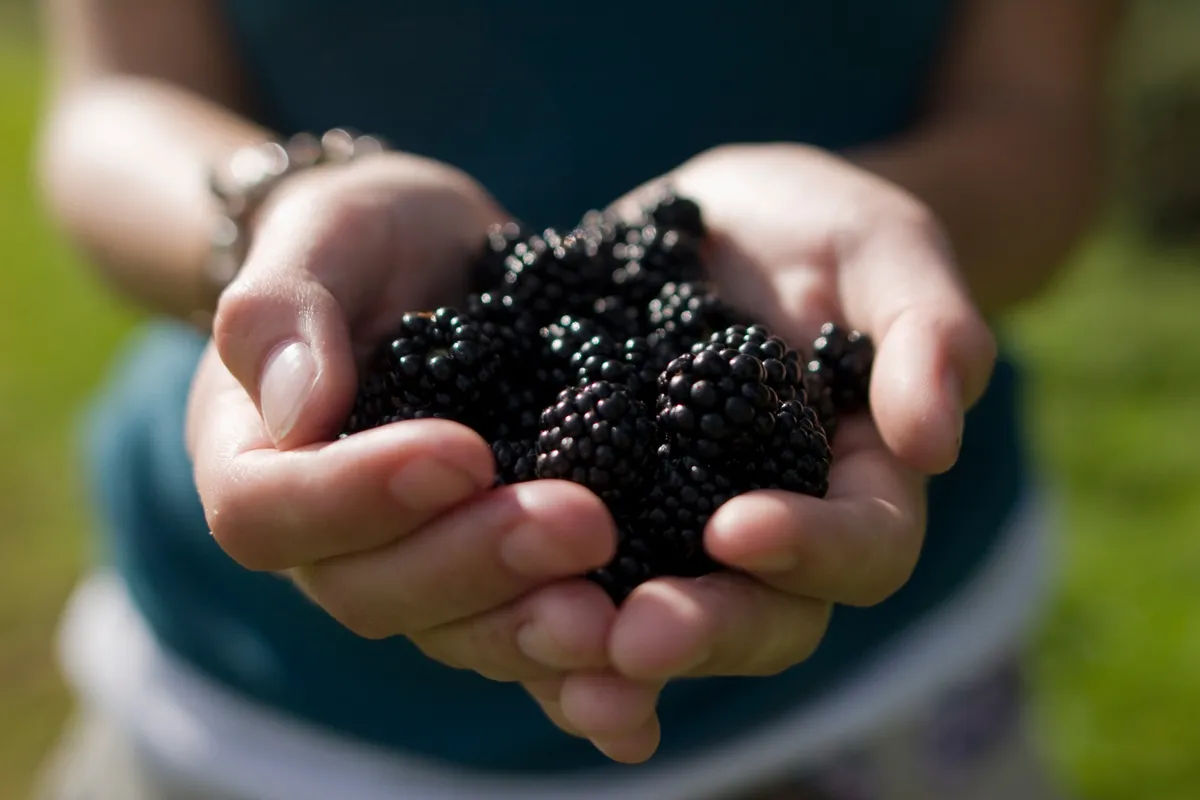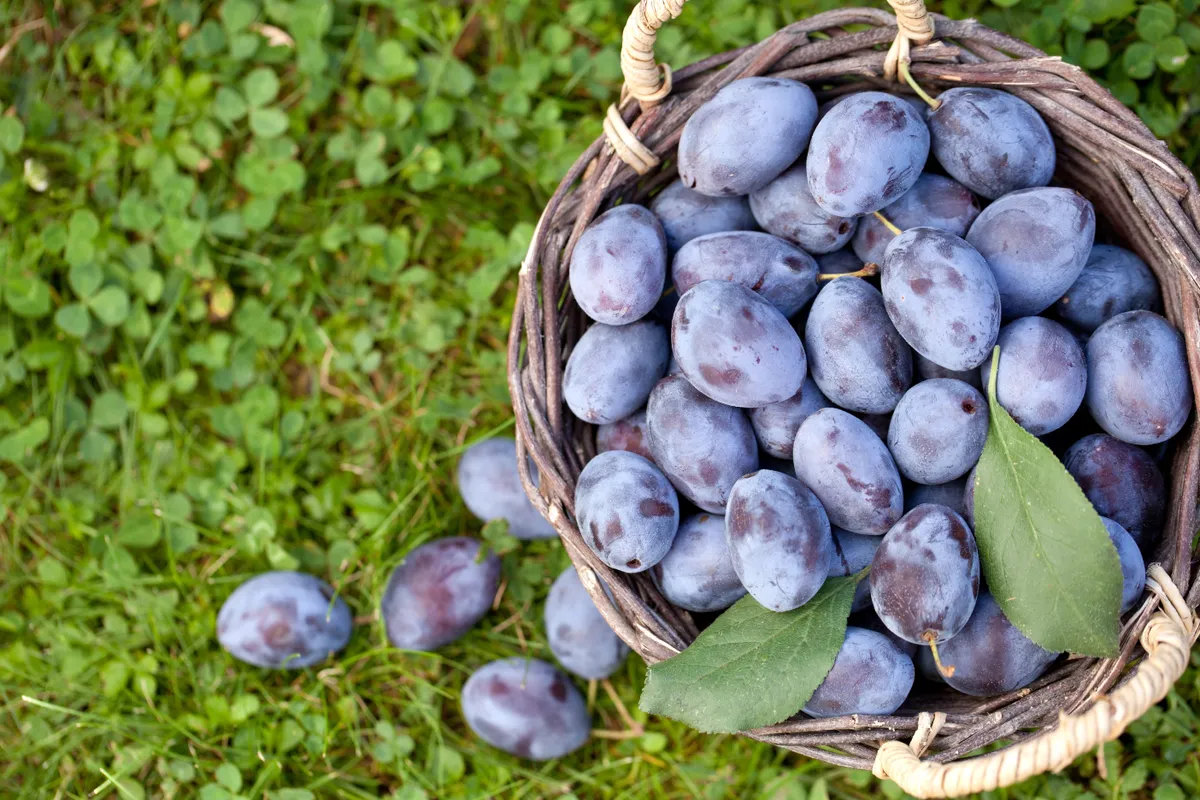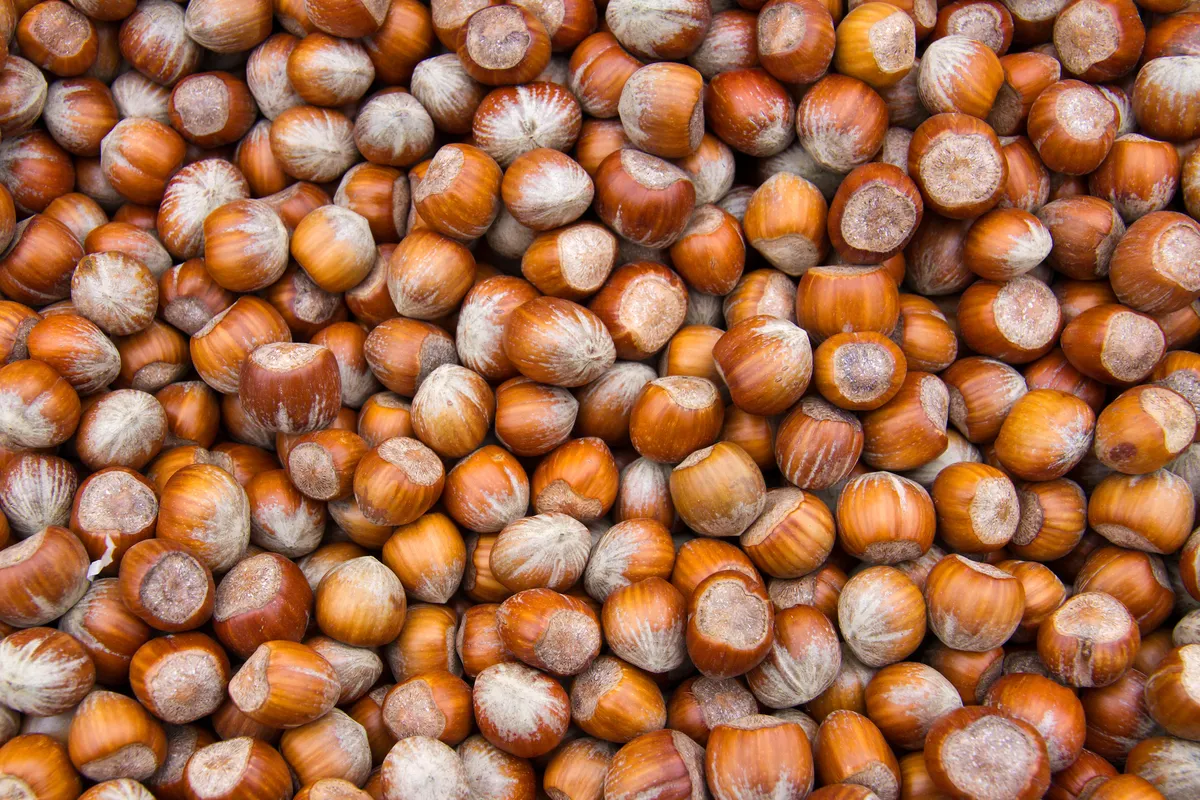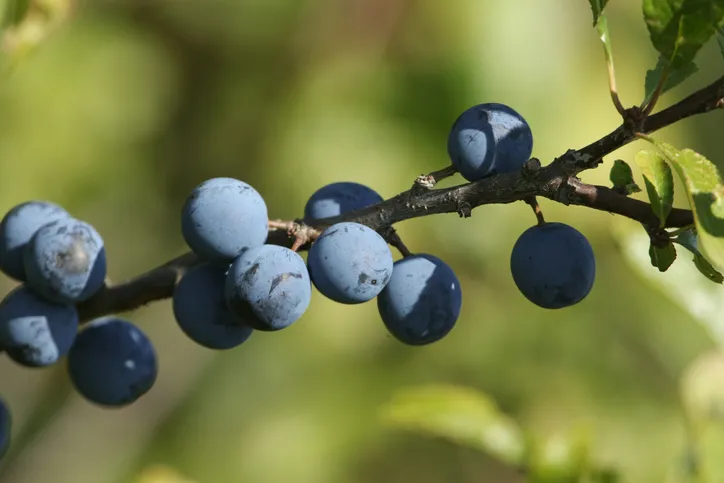Our guide on how and what to forage for in October in Britain, with a few key details regarding where each plant can be found, characteristics and recipe ideas.
Where to forage in October
Woodlands, hedgerows and the shoreline are good places to start your foray into foraging and October is a lovely month to explore the countryside. However, you may discover local parks and even your garden provide foraging hotspots.
How to forage safely and responsibly
Whether you're a seasoned forager or a complete newcomer, there are some golden rules you need to be aware of before you begin. Check out our beginner's foraging guide to learn how to forage safely and responsibly throughout the year.
Beginner's Guide to Foraging, with monthly guide to what's in season
Getty

Best nuts and berries forage for in October
Walnuts

These non-native nuts are something of a Russian Doll; a smooth, pale-green outer layer covers a further, knobbly shell that gradually hardens. The inner nut resembles two halves of a brain. Fresh walnut kernels are delicious but do not keep for long – shop bought nuts are dried artificially. Walnut trees are surprisingly overlooked in city parks and you might make a great discovery if you take a closer look at your local trees. The big oval leaves are a giveaway.

Damsons
Damsons are a member of the plum family, frequently found in hedgerows, parks, woodlands and gardens in September and October. The fruit is slightly bigger than a large grape and resembles small plums. Note the distinctive blueish bloom on the skin. Sloes are smaller and harder – the size of a marrowfat pea – and taste very bitter. Damsons are extremely versatile. They are delicious eaten ripe but can be used in jams and crumbles, or even in wines and liquors.

Damson jam
Simply weigh your damson haul and then weigh out the same amount of sugar. Add your damsons to a saucepan with a tablespoon of water and heat gently until all the fruit have softened – if you are fussy about stones, you can pick them out at this point. Then add your sugar and make sure it completely dissolves. Boil rapidly for 10 minutes and check whether the jam is at setting point (put a teaspoon of it on a cold plate and slide a finger through it. If it wrinkles, it's ready). Take off the heat pour into clean jars that you've warmed in the oven.
Damson gin or vodka
Follow this recipe for sloe gin substituting your damsons for the sloes.
Hazelnuts

Grown in clusters, hazelnuts have edible kernels inside hard-shells that are prized by hedgerow foragers; although small mammals often reach them first. Wood mice nibble a circular hole in the nut, squirrels split it neatly in half vertically, bank voles gnaw off the pointed end. If you're lucky enough to beat the squirrels, the best way to deal with hazelnuts is to carefully shell them, then roast them in a hot oven.
Why roast? Well, it improves the flavour by, give or take, 1,000 per cent. Essentially, it removes the water content making them crunchier and intensifying the nutty flavour. Try 200°C for 15 minutes, checking after 10. The smell of roasting nuts will fill the house and they will turn a perfect shade of brown. And so delicious – especially crushed and sprinkled on ice cream.
Sloes

The fruit of the Blackthorn tree, sloes are abundant in October. They are notoriously bitter when eaten straight from the branch, and make a fun highlight to family walks to see who can chew for the longest without making a face. The berries should be picked when ripe: a deep purple colour and easy to squash. A promising sign is seeing fallen sloes around the tree.
Sloe gin is a staple among homemade Christmas presents. If picking for this reason, you should traditionally wait until after the first frost so that the frost splits the skins and you don't have to bother pricking them. But if you'd rather get ahead, pick them in autumn and freeze the berries for the same effect.
- Try our recipe for perfect sloe gin
- Blackthorn guide: how to identify, folklore and uses
- Best foraging courses in the UK
Rosehips
Commonly found in hedgerows, rough grass and scrub, rosehips can grow up to 3m (10ft) high. The leaves grow in pairs of toothed leaflets, the flowers are pink or white, and the fruit is orange-red and oblong shaped. Although not poisonous, eaten raw rosehips aren't pleasant. Instead cook and turn into a delicious rosehip syrup.
Mussels

An acquired taste – some people can eat bowlfuls, others are put off by the shape, texture and strong flavour of these shellfish. October is a good time to forage for these beautiful deep blue molluscs with their orange flesh inside as they are plump after a summer's rich feeding.
There are two things to watch out for:
1. Make sure you're foraging on a clean shoreline or beach. Mussels really are what they eat and as filter feeders, this can be a problem. Never forage near a sewage outlet or a beach that has a low environmental rating. Blue Flag beaches are best.
2. Watch the tide. The best mussels are usually found on rocks at the lower point of the tide so be acutely aware of the tide timetable and make sure you have plenty of time to get back to dry land.
Foraging and eating mussels
Some don'ts: don't pick a whole patch bare of mussels and don't take anything smaller than the length of your little finger (as a very rough guide) – it won't be worth it. And don't take too many full stop. Scrub off the beard and any barnacles and simply steam in seawater for 2-3 minutes. Discard any that don't open.


